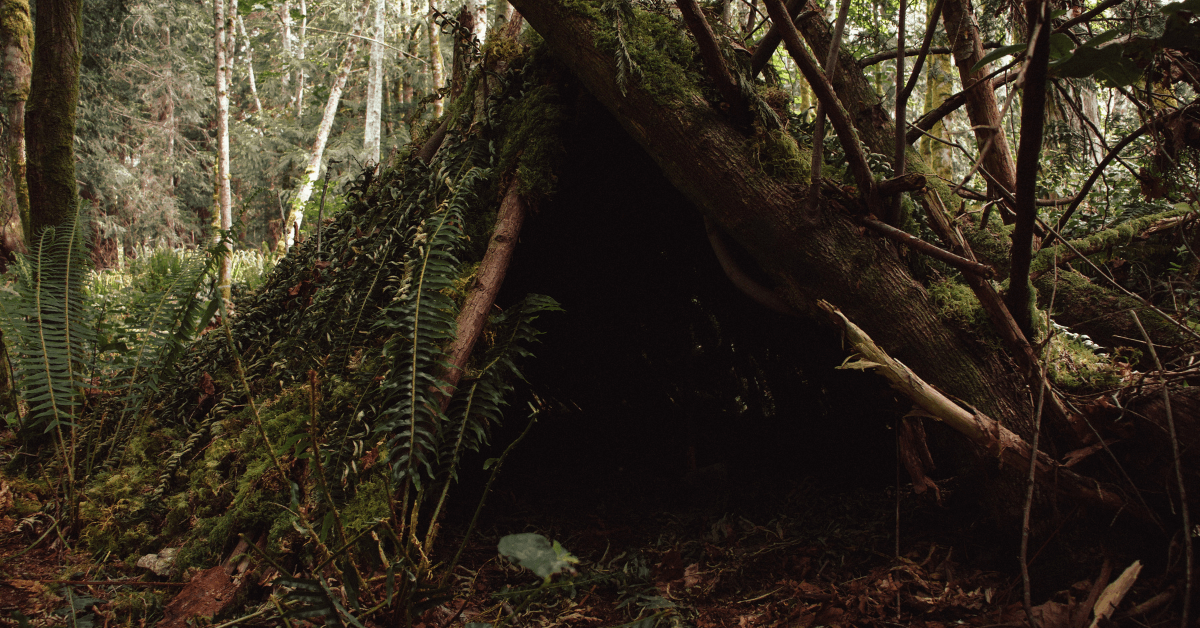When heading into the woods for an outdoor adventure, having a sturdy shelter to protect yourself from the elements is essential. While tents and other portable shelters are great options, there are times when you may need to build your own shelter to stay safe and dry.
One of the biggest concerns when building a shelter in the woods is making sure that it is waterproof. A shelter that is not properly waterproofed can quickly become uncomfortable or even dangerous in wet weather conditions. Not only can this make for an unpleasant outdoor experience, but it can also compromise your safety.
Fortunately, building a waterproof shelter in the woods is not as difficult as it may seem. With the right materials, tools, and techniques, you can create a shelter that will protect you from even the heaviest of rains.
In this guide, we’ll take you through the process of building a waterproof shelter in the woods, step by step. Whether you’re an experienced outdoor enthusiast or a novice survivalist, this guide will provide you with the information you need to create a safe and comfortable shelter in the wilderness. So, let’s get started!
Step 1: Choosing a location
When it comes to building a waterproof shelter in the woods, choosing the right location is crucial. You want to find an area that is flat, dry, and safe from potential hazards such as falling branches or rockslides. Here are some things to consider when choosing a location for your shelter:
1. Consider the Terrain
Look for a flat and level area where you can build your shelter without having to remove too many rocks or trees. Avoid areas with steep slopes or unstable ground, as these can make your shelter unstable and unsafe.
2. Look for Natural Protection
Try to find an area that is naturally protected from the elements, such as a grove of trees or a rock formation. This can help shield your shelter from wind and rain and make it more comfortable to stay in.
3. Keep Water in Mind
Avoid building your shelter in areas that are prone to flooding or in low-lying areas where water can accumulate. Instead, look for a spot on higher ground where rainwater can drain away from your shelter.
4. Be Mindful of Hazards
Look for potential hazards such as dead trees or branches, rock formations that could become unstable, or areas that are prone to flash floods. Try to avoid these areas or make sure to take precautions to ensure your safety.
5. Consider Access
Think about how easy it will be to access your shelter. You don’t want to build it too far away from your campsite or from any water sources you’ll need to use.
By taking the time to choose the right location for your shelter, you’ll be setting yourself up for a more comfortable and safe experience in the woods.
Step 2: Gathering materials

Once you have chosen the location for your shelter, it’s time to start gathering the materials you’ll need to build it. When gathering materials, always be respectful of the natural environment. Only take what you need and avoid damaging or disturbing any plants or trees unnecessarily.
By doing this, you’ll be able to enjoy the beauty of the wilderness for years to come. Here are some materials you will need to gather:
- Tarp or Waterproof Material: Your shelter needs a waterproof covering to keep you dry. A tarp or any waterproof material can be used for this purpose. Be sure to choose a size that will be sufficient to cover your shelter and provide enough extra material to secure it in place.
- Rope or Cordage: You will need rope or cordage to secure your tarp in place. Paracord is a great choice because it is strong and durable, but any type of rope or cordage will do.
- Sturdy Branches or Poles: You’ll need sturdy branches or poles to use as the frame for your shelter. Look for branches or poles that are straight and strong enough to support the weight of the tarp.
- Natural Debris: You can also use natural debris such as leaves, pine needles, or branches to create insulation and cushioning for your shelter.
- Tools: You’ll need some basic tools such as a saw or machete to cut down branches and other materials. A hatchet or knife will also come in handy for carving and shaping your branches and poles.
It’s important to gather all the materials you need before you start building your shelter. This will ensure that you have everything you need to complete the project without having to leave your construction site.
Step 3: Building the shelter
With your materials gathered, it’s time to start building your waterproof shelter. Remember that building a waterproof shelter in the woods can take time and effort, so be patient and take breaks when you need to.
It’s important to build a sturdy and reliable shelter that will keep you dry and safe, so don’t rush the process. Follow these steps to create a sturdy and reliable shelter:
- Build the Frame: Start by constructing the frame of your shelter using the sturdy branches or poles. Create a rectangular or triangular frame that is big enough to comfortably accommodate you and your gear.
- Secure the Tarp: Once the frame is in place, drape the tarp over it so that it covers the entire frame and extends to the ground on all sides. Use your cordage to secure the tarp in place, tying it tightly to the frame.
- Add Insulation: If you have natural debris such as leaves or pine needles, use them to create a layer of insulation between the tarp and the ground. This will help keep you warm and dry.
- Create an Entrance: Use additional branches or poles to create an entrance to your shelter. This can be a simple flap that can be lifted up to enter and exit the shelter.
- Test for Stability: Before settling into your new shelter, give it a good shake to test its stability. Make sure that the frame is sturdy and the tarp is securely fastened in place.
Once your shelter is complete, take a moment to admire your handiwork and settle in for a cozy and dry night in the wilderness.
Step 4: Waterproofing the shelter
Now that your shelter is built, it’s time to take some additional steps to ensure that it is truly waterproof. Here are some tips to help you waterproof your shelter:
- Seal the Seams: If your tarp has seams, use a waterproof sealant to cover them. This will prevent water from seeping through the seams and into your shelter.
- Use a Ground Cover: If you don’t have natural debris to use as insulation, you can use a ground cover such as a plastic tarp or even a garbage bag to create a barrier between the ground and your shelter. This will prevent water from seeping up from the ground and into your shelter.
- Add a Rain Fly: If you’re expecting heavy rain or wind, consider adding a rain fly to your shelter. This is an additional layer of waterproof material that is suspended above your shelter and helps to deflect rain and wind away from it.
- Elevate the Shelter: If possible, elevate your shelter off the ground to prevent water from pooling underneath it. This can be done by placing your shelter on top of a platform made of logs or branches.
- Maintain Your Shelter: Regularly check your shelter for any signs of wear and tear or damage. Repair any holes or tears in the tarp as soon as possible to prevent water from seeping in.
By taking these steps, you can ensure that your shelter is truly waterproof and will keep you dry and comfortable in even the heaviest of rainstorms.
Related: How To Survive In The Jungle With Nothing
Step 5: Maintaining the shelter
Now that your shelter is built and waterproofed, it’s important to maintain it properly to ensure that it continues to provide the protection you need from the elements. Here are some tips for maintaining your shelter:
- Regular Inspections: Regularly inspect your shelter for any signs of damage or wear and tear. This will help you identify any potential issues before they become bigger problems.
- Keep it Clean: Keep your shelter clean by sweeping out any debris or dirt that accumulates inside. This will help prevent mold or mildew from growing, which can cause health issues and weaken the structure of your shelter.
- Reinforce Weak Spots: If you notice any weak spots or areas that are prone to damage, reinforce them with additional material or support. This will help prevent further damage and ensure that your shelter remains strong and sturdy.
- Repair Damage Promptly: If you do notice any damage, repair it promptly to prevent it from getting worse. This can be done with materials such as duct tape or additional patches of tarp.
- Store it Properly: When you’re not using your shelter, store it in a dry and cool place to prevent any damage from moisture or heat. This will also help extend the life of your shelter.
So there you have it, my detailed guide on how to build a waterproof shelter in the woods. To construct a waterproof shelter, you need to choose a suitable location, gather the right materials, and build the shelter with proper waterproofing techniques.
Maintaining the shelter is also crucial to ensure it stays in good condition. By following these steps, you can create a secure and comfortable shelter that will protect you from the elements during your outdoor adventures.
